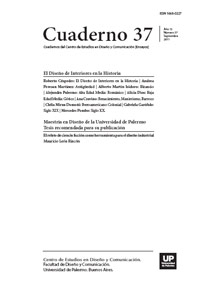
El Diseño de Interiores en la Historia Maestría en Diseño de la Universidad de Palermo
En esta edición se publican los resultados del proyecto realizado por el Instituto de Investigación en Diseño de la Universidad de Palermo, en el marco del antecendente de la Línea de Investigación Nro. 7 Diseño y Economía.
Published:
2019-10-30

